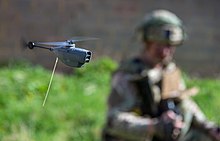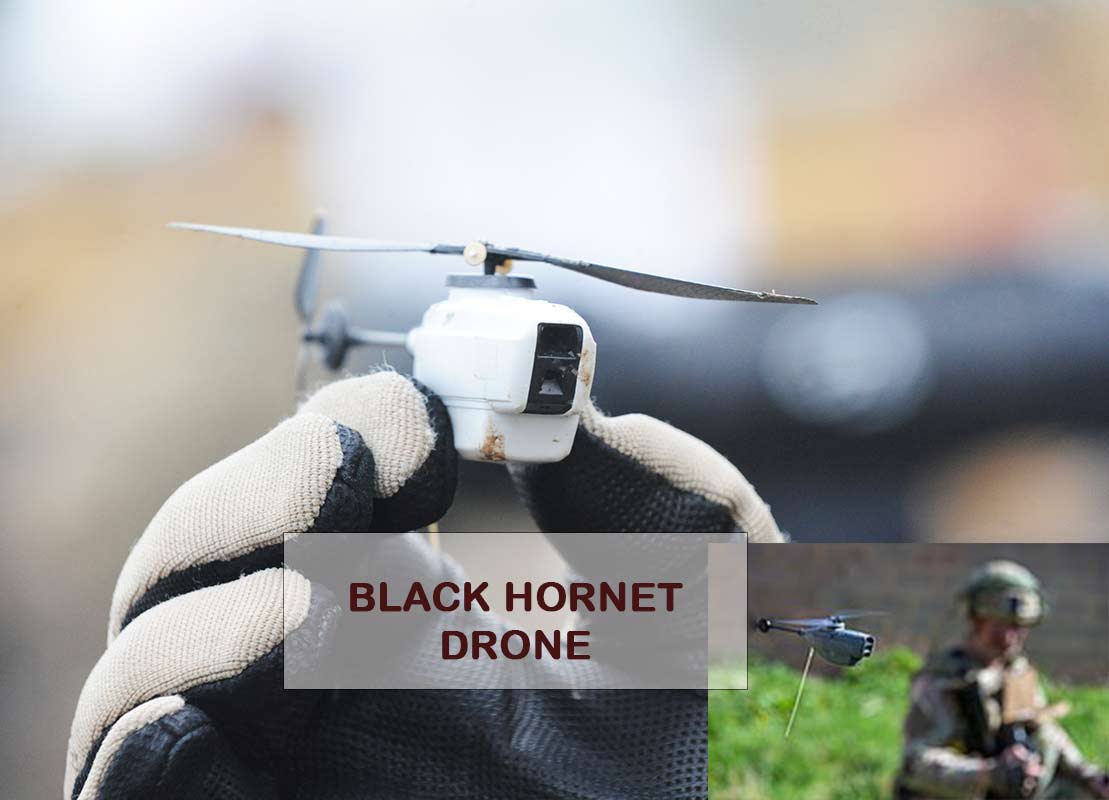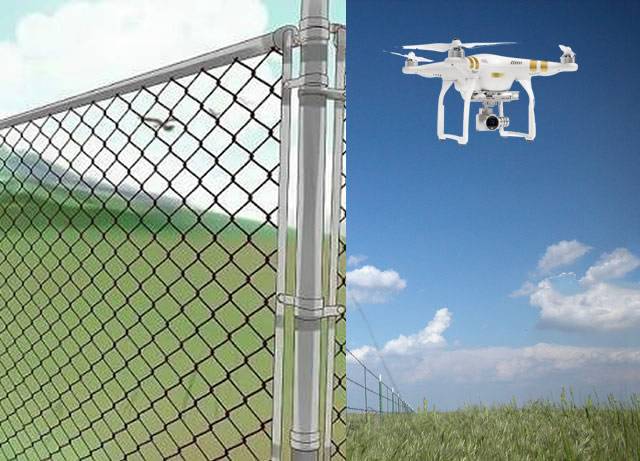The PD-100 Black Hornet Nano drone is a tiny Unmanned Air Vehicle (UAV) drone developed by Flir Systems after acquiring it from Prox Dynamics in April 2008.
The black hornet nano unmanned air vehicle drone is relatively stealthy, and small in size. It uses GPS and autonomous flight controls to navigate. It can be used for a variety of tasks, including surveillance, mapping, and reconnaissance. This drone is easy to fly and can be used for both indoor and outdoor purposes.
Table of Contents
What Can a Black Hornet Do?
The tiny, remotely-controlled rotorcraft, UAV Nano drone lets armed troops spy and access remote locations for potential threats and to provide situational awareness on the battlefield.
The small UAV Nano drone helps to save the lives of front-line soldiers by providing them with intelligence, surveillance, and reconnaissance support in mission-critical operations.
Is the Black Hornet Super Small Drone the Smallest Military Drone in the World?
The recent PD-100 Black Hornet 3 which is less than 7inc long, weighs less than a tenth of a pound. FLIR Systems calls this latest PD-100 Black Hornet 3, the Personal Reconnaissance System (PRS).
Its complete system comes with a hand-held touchscreen device, a controller, and a docking station for two drones to protect them when they are not in use.
The size of this Nano drone makes it different from other common UAVs such as MQ-9 Reaper, Global Hawk, and the new Loyal Wingman.
As part of its mission to develop, produce and sell the world’s smallest and most advanced UAV, Prox Dynamics As, the Norwegian company that created the Black Hornet succeeded in creating the miniature unmanned drone at just over the size of a soldier’s finger.
Black Hornet Nano Drone Development
The development of the Black Hornet was initiated by Prox Dynamics in 2008. Before the drone went into the production phase, it went through various test flights in 2012.
Prox Dynamics was awarded a contract by the UK Ministry of Defence for the delivery of some units for its armed forces by early 2013. These units were then deployed in Afghanistan to meet the UK’s Armed Forces surveillance requirements.
Various other countries across the world also have this UAV drone in the services of their security forces.
FLIR Systems eventually acquired Prox Dynamics in 2016.
In July 2014, the PD-100 Black Hornet was chosen by the US Army Natick Soldier Research, Development, and Engineering Center (NSRDEC). This was carried out under the program of Cargo Pocket Intelligence, Surveillance, and Reconnaissance (CP-ISR). However, the US military forces underwent training with this UAV drone at a particular event in 2015
In June 2018, Flir Systems launched the next-generation Black Hornet 3 nano-UAV.

PD-100 Black Hornet UAV Design
The Black Hornet UAV is a new design for an unmanned aerial vehicle (UAV) that is being developed by a team of this P-100 drone at the University of Queensland.
It is a small, lightweight UAV that is designed to be easy to control and fly. This drone is also equipped with a camera system that can be used to capture images and videos.
It is a perfect tool for surveillance and reconnaissance missions. The UAV drone can be used to monitor large areas or to identify and track objects of interest.
The Black-Hornet is also perfect for carrying out targeted attacks. It can be used to attack targets that are difficult or impossible to reach using traditional aircraft.
Also, it is built around a very strong shell of the plastic mold with an aerodynamic shape capable to withstand stormy winds. The small-shaped UAV drone has built-in three surveillance cameras within its nose. It has a complete system made up of two UAVs and a base station.
The length of this UAV drone is about 100mm with a rotor span of 120mm, and a weight of 16gm which includes the surveillance camera. In total, the complete system without the display weighs less than 1kg.
Black Hornet Features
PD-100 Black Hornet is designed for easy mobility and because of its tiny size, the complete system can fit into the pocket of a soldier. The entire system can even be carried by a soldier along with his gear.
This small-sized UAV drone is easy to be used effectively by an operator in congested and potential threat zones.
The small UAV drone system generates little to no noise making it so stealthy. The system is always available to fly upon request and can take off in less than a minute.
The next-generation Black Hornet 3 nano-UAV weighs 32gm and comes with some improved features like the ability to fly in non-GPS environments.
Black Hornet Power Unit
The PD-100 Black Hornet Nano UAV is powered by a tiny rechargeable battery. This battery is built to rotate the horizontal and vertical rotors installed on it.
Ground Controlling Station
PD-100 Black Hornet Nano UAV can be controlled by an operator from the ground using a joystick-like device and at a range of up to 1,000m.
Its control base station provides adequate planning, execution, and analysis details to the operator. The details also include display and system control connections.
Performance of Black Hornet UAV
This Nano UAV drone can fly at a speed of 10m/s and can endure for up to 25 minutes.
Sensors and navigation of Black Hornet nano UAV
The Black Hornet nano UAV is equipped with a variety of sensors for navigation and control. These include a GPS receiver, an inertial measurement unit (IMU), and a barometric pressure sensor. These sensors allow the UAV to maintain its orientation and altitude, and to fly autonomously.
It also comes installed with a steering Electro-Optic (EO) camera that is capable to produce still images and live videos which are displayed on a hand-held device from the base station. The base station controls can also be used to zoom the camera for a clearer or enlarged view of pictures.
The UAV also features a suite of sensors for monitoring its environment. These include a camera and a laser scanner. The camera is used to capture images of the surrounding area, and the laser scanner is used to detect obstacles and other objects.
It is also installed with an auto pilot system on board that lets the drone be handled in two modes by an operator.
An operator can directly operate the drone or he can program it to go through a specified path using its inbuilt installed GPS. The drone’s digital data link lets an operator control it within a 1,000m range.
These sensors allow the Black Hornet nano UAV to navigate through complex environments. It can also fly autonomously.
READ ALSO: DJI Geofence Restrictions and Unlocking
Black Hornet Nano UAV Drone Frequently Asked Questions
What can a Black Hornet do?
The Black Hornet NANO UAV can be used by the armed troops to spy on potential threats on the battleground. The tiny, remotely-controlled rotorcraft offers help to save the lives of front-line soldiers. In mission-critical operations, it offers intelligence, surveillance, and reconnaissance support to armed forces.
How much is a Black Hornet?
The FLIR Systems’ PD-100 Black Hornet 3, also called the Personal Reconnaissance System (PRS), which is seven inches long and about 1.6 ounces in weight costs $195,000.
What is the smallest military drone in the world?
The smallest military drone in the world is the Black Hornet with its feature of being a small and remotely-controlled rotorcraft.
How does the Black Hornet Nano work?
The Black Hornet Nano UAV is powered by a very small rechargeable battery that is designed to rotate the installed horizontal and vertical rotors.
Are military drones silent?
Military drones are silent due to their small, remotely-controlled rotorcraft feature.
What is a nano UAV?
Nano UAV is a military small Unmanned Aerial Vehicle (UAV) used by the armed troops of several countries around the world that lets them spy on potential threats. It also provides troops on the ground with local situational awareness to save the lives of front-line soldiers.
Nano UAV offers intelligence, surveillance, and reconnaissance support to armed forces in mission-critical operations.
Can military drones be shot down?
Military drones can be shot down. According to a US defense official, a British Typhoon jet shot down an incoming drone using an advanced short-range air-to-air missile (ASRAAM).
How small can spy drones be?
Spy drones are as small as seven inches long and weigh less than 1.6 ounces. For example, the FLIR system’s Black Hornet Personal Reconnaissance Systems (PRS) drones are as small as the size of a thumb finger.
Are there drones that are silent?
The DJI Mavic Pro Platinum drones are silent. In addition to its quiet feature, it is a lightweight and compact drone.
What is the smallest drone made?
The smallest drone ever made in the world is the SKEYE Pico Drone by Dutch company, TRNDlabs. This tiny drone weighs 0.25 ounces with dimensions 0.87 x 0.87 inches.
How do you take down a military drone?
A military drone can be taken down with a blunt force by knocking it out of the air with another object. This is a similar approach to the common anti-air and missile defense but on a smaller scale.
Conclusion
The Black Hornet Nano UAV is a small, remotely-controlled rotorcraft drone that lets armed troops spy and access remote locations for potential threats and to provide situational awareness on the battlefield.
It helps to save the lives of front-line soldiers by providing them with intelligence, surveillance, and reconnaissance support in mission-critical operations.
I hope you got value from reading up what this amazing military Nano Unmanned Air Vehicle (UAV) drone can do.
For a variety of other drones, you can view the list on Amazon.
You can leave a comment below to share your opinion about the Black Hornet Nano UAV drone with us.
Do have a great one.
Share
